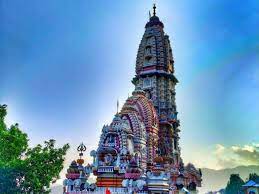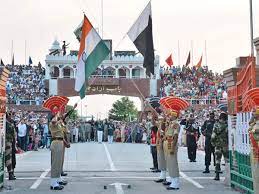Wonders of India: Temples to leave you in awe

Kiradu Temples, Rajasthan

About 35 km from Barmer, in the Thar Desert, is the land of Kiradu. Dusted and ruined by the winds over the years, Kiradu has been deserted for over 900 years now. It is because of the legend that this land was cursed by a sage. It is believed that there were 108 temples here but the ruins of only five temples remain. The Someshwara temple dedicated to Lord Shiva is the best-preserved structure. The city was ruled by the Chalukyas, who built these temples somewhere between the 10th century and 11th century. Though the dust and winds have disfigured the carvings you can still spot some that still look unhackneyed. The octagonal mandapas of Someshwara and Vishnu temples still retain their charm. Though not as well-known due to its location, Kiradu temples are a wonder from beyond time.
Sahastrabhu temple, Madhya Pradesh

Famously known as the Sasbahu temple, it is an 11th-century twin temple in the Gwalior Fort, Madhya Pradesh. The temple is dedicated to Lord Vishnu in his Padmanabha form, like most Hindu and Jain temples in this region, it is also mostly in ruins and was badly damaged from numerous invasions and Hindu-Muslim wars in the region. The temple was three-storeyed, which was one of its distinguishing features and sophistication. The surviving elements of the temple are the entrance porch and the mandapa. Though the prasada no longer exists, the triple storey plan with a cruciform foundation and balconies suggests that it had North Indian Bhumija style architecture. The pillars have octagonal bases as well, with girls carved but these have been defaced and mutilated. The sanctum has an image of damaged Vishnu, next to him stands Brahma holding the Vedas on one side and Shiva holding the trident on the other side.
Khajuraho, Madhya Pradesh

A well-known cluster of temples, where tourists from far and wide come to admire a form of architecture that is different from the conventional temple designs. Erotic sculpture and carvings are the major reason why people visit this spot. About 50 km from the Chhatarpur city in Madhya Pradesh, Khajuraho is a group of 85 temples out of which only 22 were able to stand the test of time. These temples are dedicated to two religions Hinduism and Jainism. Despite the common reason for Khajuraho being a tourist attraction are the erotic carvings but surprisingly only 10% of the carvings in the temple are erotic. There are various other carvings that depict the daily life of humans and also celebrate the beauty of femininity. These sculptures are not chiselled but are mobile and liquid, representing the people who exult in the joy of living, with all its fascinating variety.
Bishnupur terracotta temples, West Bengal

Announced a world heritage site in 1997, Bishnupur is a whole complex of temples made of terracotta. Drive about 139 km from Kolkata and you will come across a complex of intricately made temples that are quite unique. Made out of terracotta or clay it leaves visitors wondering as to how they stood the test of time. Built by the Malla Kings, who ruled a part of West Bengal between Burdwan and Purulia these temples are dedicated to Lord Vishnu and were built over a long period of time; from the 11th century to the 17th century. Go to Bishnupur today and it’s hard to imagine that this was once a great centre of art and culture. The Malla kings were patrons of Vaishnavism and invited scholars and artists from all to Bishnupur. A lot of that richness is reflected in the terracotta temples that stand tall even today.
Dwarkadhish Mandir, Gujarat

One of the four dham of the Hindu pilgrimage, Dwarkadhish temple is of great mythological significance, dedicated to Lord Krishna. According to Mahabharata, Dwarka was chosen by Lord Krishna to shift the capital of his empire from Mathura as it was constantly attacked by Jarasandha, who wanted to avenge the death of his son in law, Kamsa. The temple has two entrances - "Moksha Dwara" (Door to Salvation) towards the North and "Swarga Dwara" (Gate to Heaven) on its North. The main temple included four sections- Vimangrih, Bhadrapeeth, Ladva Mandap and Arth Mandap. From plinth to walls to columns, every corner of the temple is profusely carved with panels of elephants, dancers, celestial beings and musicians. Situated a short distance to its east is small lavishly carved Rukmini Temple. Built in the 12th century, the temple is dedicated to Krishna's wife. The eve of Janmashtmi is the most special occasion in any Krishna temple, the Dwarkadhish temple is adorned by thousands of devotees chanting prayers and rituals. The shrine is a hive of colours, voices and faith transforming itself into inner silence and sanctity.
You may like post

EXPLORING INDIAs GODDESS TEMPLES BY ROPEWAY
Visiting Goddess Temples with Ropeway Access Across India

SHEETALA ASHTAMI A DAY OF PURIFICATION AND DEVOTION
Join us as we explore the traditions of Sheetala Ashtami, celebrating the goddess of health.









